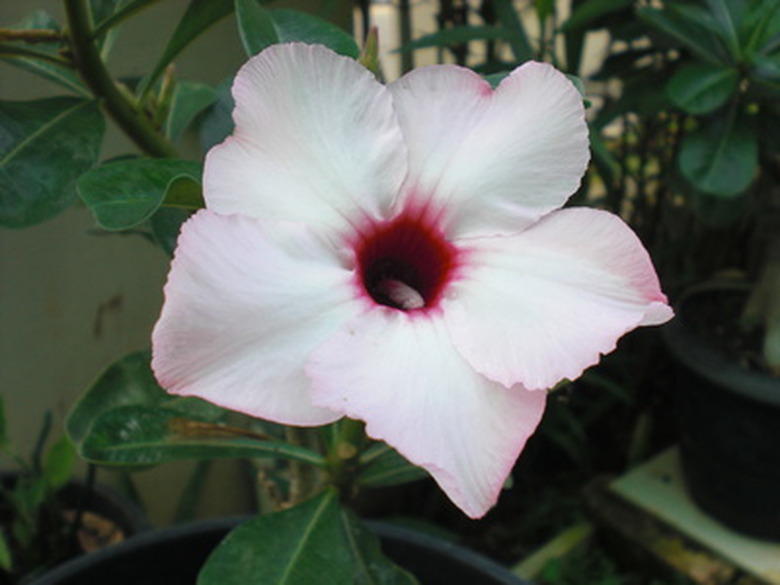Desert Rose Flowers In Florida
The desert rose (Adenium obesum) flourishes in the state of Florida's tropical and sub-tropical climate. The plant produces a wealth of blossoms that grow up to 2 inches long. The trumpet-shaped flowers appear pink, red and white. The plant is native to east Africa and areas of Arabia, according to the University of Florida.
Succulent
The desert rose is a succulent plant, which means it stores large amounts of water in its fleshy foliage in the event of a drought. The plant grows up from a large bulbous structure located just above the soil line. It produces a thick white substance that is toxic when the foliage is cut or broken. The desert rose grows between 3 to 5 feet high. It is widely grown as a garden specimen and also as a container plant on the patio.
- The desert rose (Adenium obesum) flourishes in the state of Florida's tropical and sub-tropical climate.
- The desert rose is a succulent plant, which means it stores large amounts of water in its fleshy foliage in the event of a drought.
Sunlight
The desert rose requires very bright sunlight and must be placed in full sunlight to blossom and flourish. When the plant is placed in the shade in Florida, it often succumbs to fungus infections. It can also quickly become leggy in its efforts to reach the sunlight. This can make the overall plant awkward and unsightly. The plant will also begin to flower less in the shade or cease flowering completely.
Temperature
Temperatures around 90 degrees F are ideal for the desert rose. It will not tolerate a temperature that drops below 40. Grow the desert rose in a container in northern Florida so when the region is hit with an occasional frost, the plant can be easily brought indoors. During the winter months, the desert rose goes dormant and ceases flower production. Keep the plant dry during its dormancy.
- The desert rose requires very bright sunlight and must be placed in full sunlight to blossom and flourish.
- Grow the desert rose in a container in northern Florida so when the region is hit with an occasional frost, the plant can be easily brought indoors.
Water and Fertilizer Requirements
The desert rose requires very little water. The plant should not be watered if the daytime temperature dips below 80. The nighttime temperature should be above 65 before the home gardener considers watering the desert rose. Water the plant in the spring when planted in south Florida, but only when the dirt around it feels completely dry. Water thoroughly, then allow the plant to dry completely out. Excessive watering can lead to fungal infections and rot; never allow the desert rose to sit in standing-water. During the active summer growth period, fertilize the plant once a month using a water soluble 20-20-20 fertilizer mixed at half strength, according to the University of Florida.
- The desert rose requires very little water.
- Water the plant in the spring when planted in south Florida, but only when the dirt around it feels completely dry.
